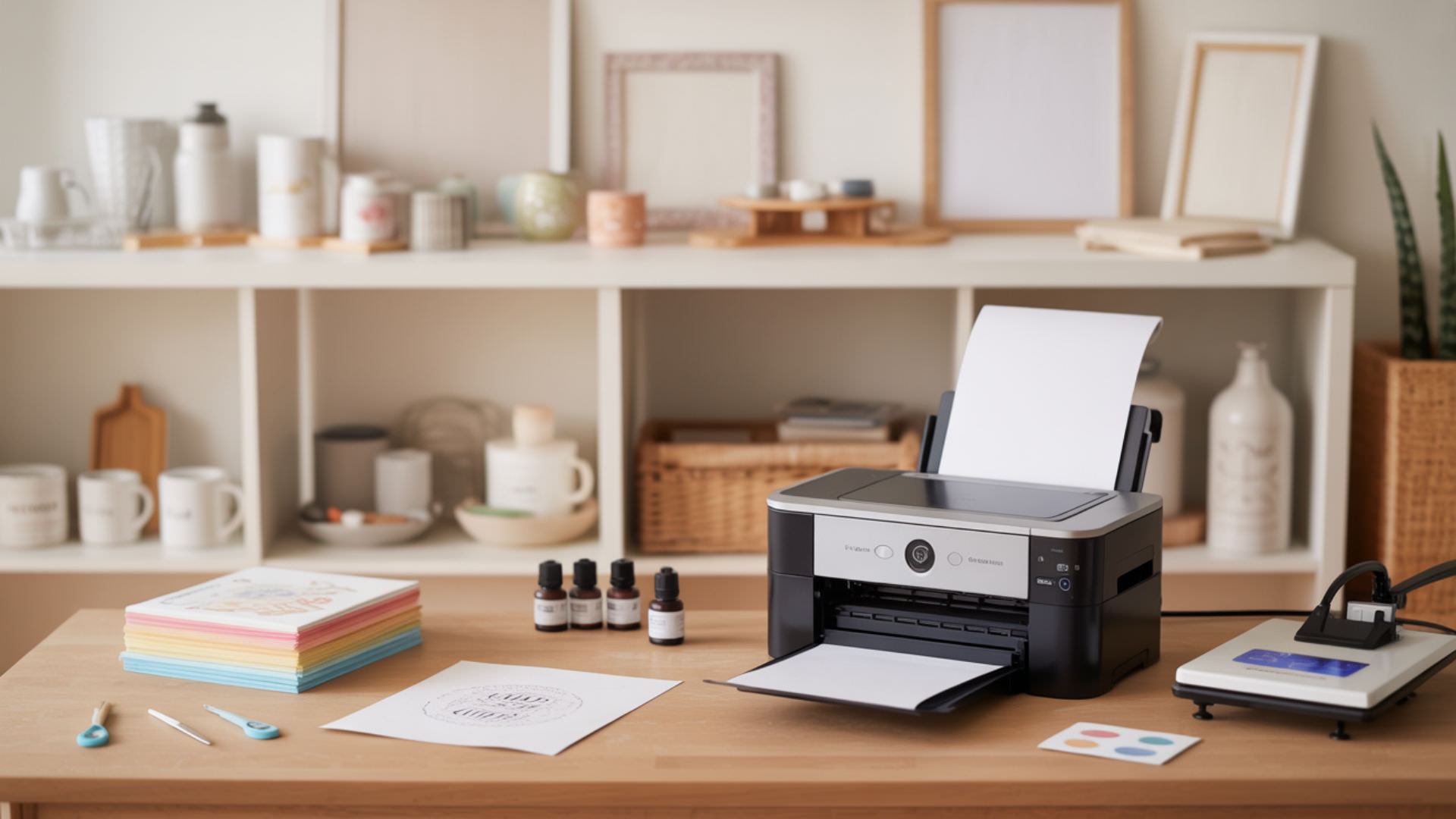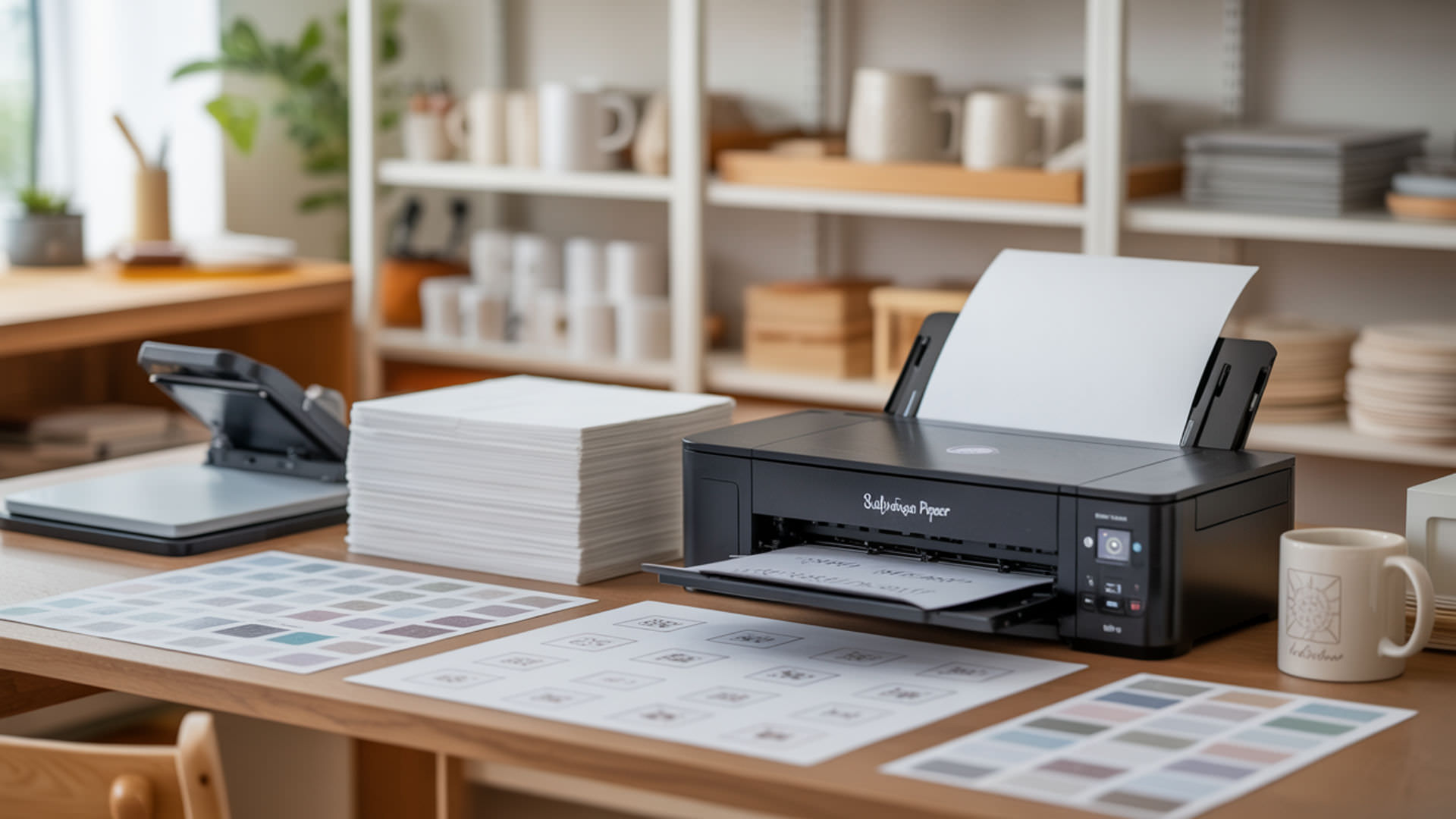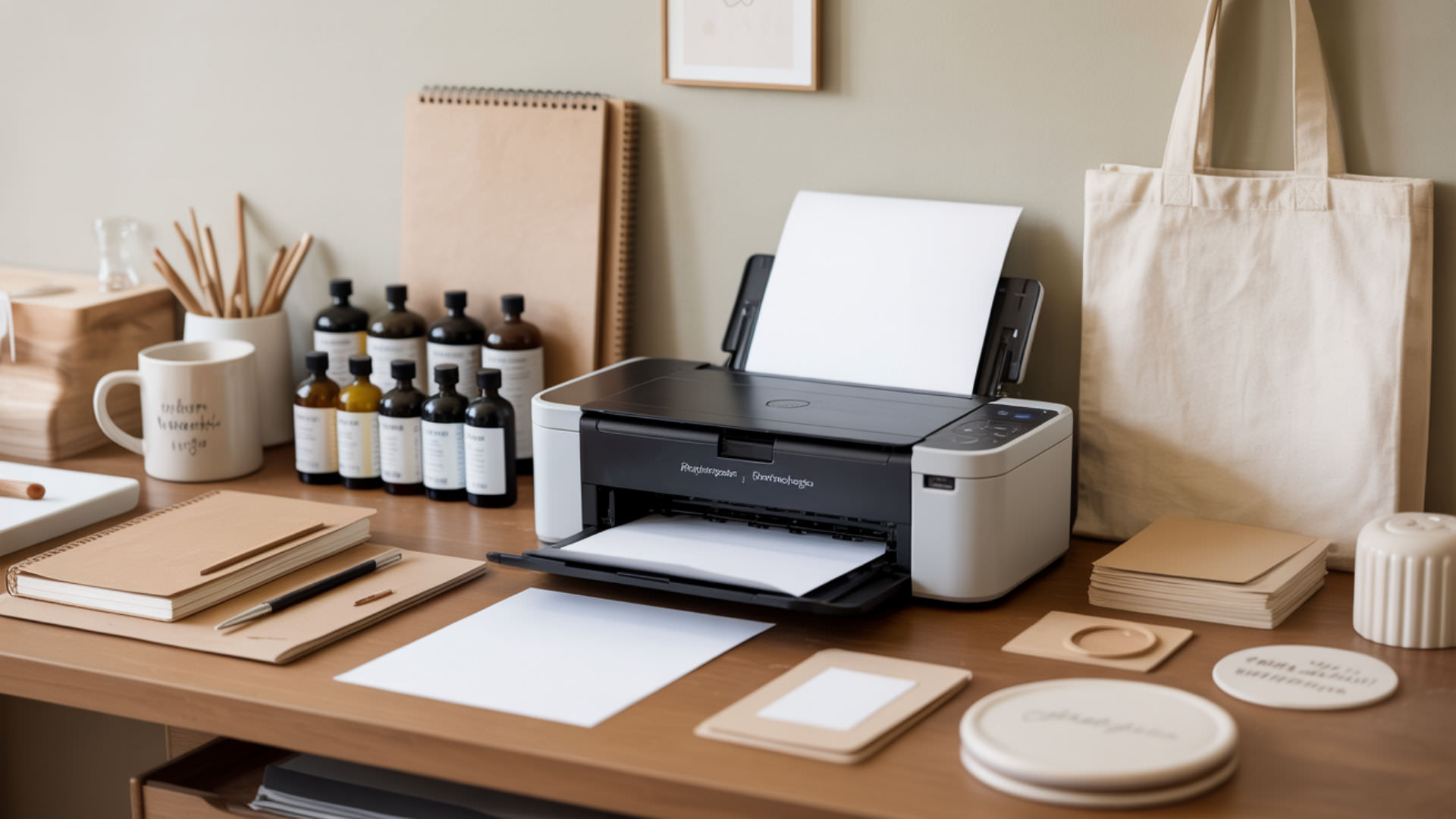Table of Contents
ToggleConverting a Brother inkjet printer for sublimation requires careful model compatibility research to determine whether the device uses piezoelectric or thermal printhead technology. Most Brother printers use thermal heads that cannot safely handle sublimation ink CMYK. Understanding model compatibility research principles prevents costly conversion mistakes with incompatible hardware. Sublimation ink requires heat-free firing to avoid burning disperse dyes during the printing process.
Key Takeaways
- Print head type determines whether sublimation conversion is possible—piezo-style printheads work safely while thermal inkjet heads cause overheating and dye burning.
- Most Brother printers use thermal inkjet technology, making them fundamentally incompatible with sublimation ink chemistry and conversion attempts.
- Piezo-style printhead models from Brother are rare, and even compatible units deliver inconsistent results compared to Epson conversions.
Can a Brother printer be converted for sublimation?

Only certain Brother inkjet printers with piezo-style printheads can technically convert for sublimation. Most Brother models use thermal inkjet heads that overheat sublimation ink during firing, causing permanent damage. The same piezo-style printhead requirement applies when converting any inkjet printer to sublimation. Model compatibility research confirms whether your specific Brother printer qualifies before attempting conversion.
Which Brother printers can be used for sublimation?
Brother printers with piezo-style printheads can theoretically accept sublimation ink, but such models are rare in the Brother lineup. Each ink cartridge must be replaced or flushed before installing sublimation ink. Most users find that Epson EcoTank or WorkForce conversions deliver more reliable results than Brother printer conversions. Thermal printheads generate heat inside the nozzle chamber to eject ink droplets, which prevents most Brother printers from safely handling sublimation ink. [1]
Does Brother make a sublimation printer?
Brother currently manufactures the SP-1 dedicated sublimation printer designed for polyester and polymer-coated items. However, their standard inkjet lineup uses OEM dye or pigment ink incompatible with sublimation chemistry. Converting standard Brother printers requires hardware redesigns that most users cannot accomplish without specialized knowledge and components.
What happens if you use sublimation ink in a Brother printer?

Using sublimation ink CMYK in a standard Brother printer causes permanent print head damage. The thermal firing mechanism overheats disperse dyes, creating immediate nozzle blockages. Ink pathways clog with burned dye residue that cannot be cleaned. The heat used during printing prematurely activates sublimation chemistry before ink reaches the transfer paper. Standard Brother inkjet printers rely on thermal inkjet technology that ejects ink by rapidly heating it inside the printhead, which makes them incompatible with heat-sensitive sublimation dyes. [2]
Can you use regular Brother ink for sublimation?
No, regular Brother ink cannot be used for sublimation projects. OEM dye or pigment ink lacks the disperse dye chemistry that transforms into gas under heat. Standard inks absorb into paper fibers permanently rather than transferring to polyester substrates. Cartridge contamination occurs if sublimation ink contacts OEM ink residue.
What kind of ink does Brother printer use?
Brother printers use either pigment-based or dye-based OEM ink depending on the model. Each ink cartridge contains formulations designed for standard paper printing, not sublimation transfer. These inks sit on top of paper surfaces rather than bonding with polyester fibers through the gas-phase dye diffusion that defines sublimation.
What are the downsides of converting a Brother printer for sublimation?
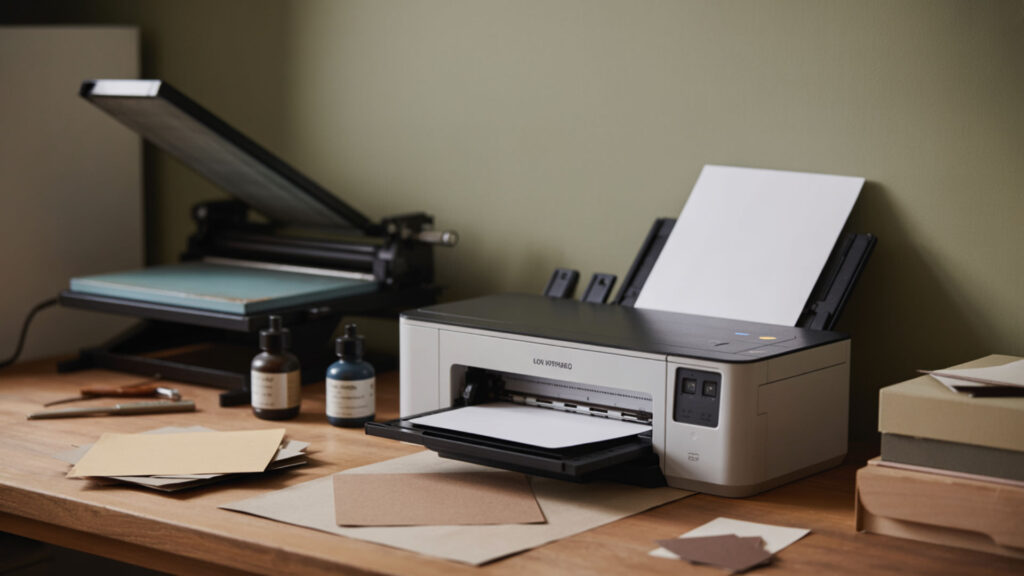
Converting Brother printers creates high risk of printhead clogging, banding from partially blocked nozzles, and immediate warranty voiding. Brother offers no manufacturer support for sublimation modifications. Limited ICC profile availability produces inconsistent color output. WorkForce conversions share identical warranty voiding risks but offer better community support and conversion resources.
Can you change brands of sublimation ink?
Yes, but switching sublimation ink CMYK brands requires complete system flushing first. Different formulas cause cartridge contamination and nozzle clogs when mixed with residual ink from previous brands. Run multiple cleaning cycles with flushing solution before introducing new ink. Update ICC profiles after switching brands for accurate color reproduction.
What is the best ink for sublimation?
The best sublimation ink depends on your printer model and color management workflow requirements. Disperse dye formulation affects vibrancy, smoothness, and transfer quality. Popular brands include Hiipoo for overall quality, Printers Jack for value, and Cosmos Ink for Epson EcoTank conversions. Brother’s SP-1 requires Brother Genuine Sublimation Ink.
How do you convert a Brother printer step-by-step?
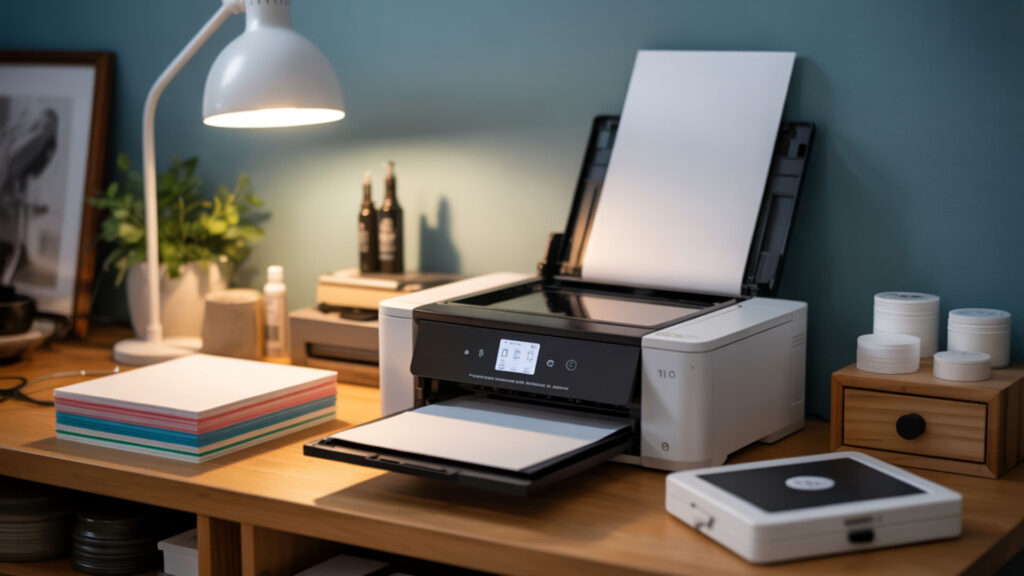
Converting a compatible Brother printer requires complete ink system preparation. Only attempt this process with confirmed piezo-printhead models:
- Verify your Brother model uses a piezo-style printhead, not thermal.
- Remove all OEM ink cartridges from the printer.
- Perform ink flushing to purge residual OEM dye or pigment ink.
- Install refillable cartridges for Brother filled with sublimation ink.
- Run an initial ink charge to prime the print head.
- Print nozzle checks until all channels fire correctly.
- Install ICC profiles for Brother and sublimation color accuracy.
How do you use a Brother printer for sublimation printing?

Print designs onto sublimation transfer paper, then press onto polyester or polymer-coated blanks using a heat press at 390-400°F for 35-45 seconds with medium pressure. Substrate compatibility determines transfer success—see our guide to the best Epson sublimation printers for polyester / polymer-coated blanks recommendations. Mirror all designs before printing so text appears correctly after transfer.
Do you print on the blue or white side of sublimation paper?
Print on the bright white coated side of sublimation transfer paper. The coating holds disperse dye ink until heat activates the transfer. The blue or gray backing side cannot accept ink properly and will produce failed transfers with missing or faded imagery.
Do you mirror sublimation prints for shirts?
Yes, always apply the mirror image or reverse print setting before printing sublimation designs for shirts. The mirroring ensures correct final orientation when the design flips during heat press transfer. Without mirroring, text and logos appear backward on the finished garment.
What format and settings work for Brother sublimation?
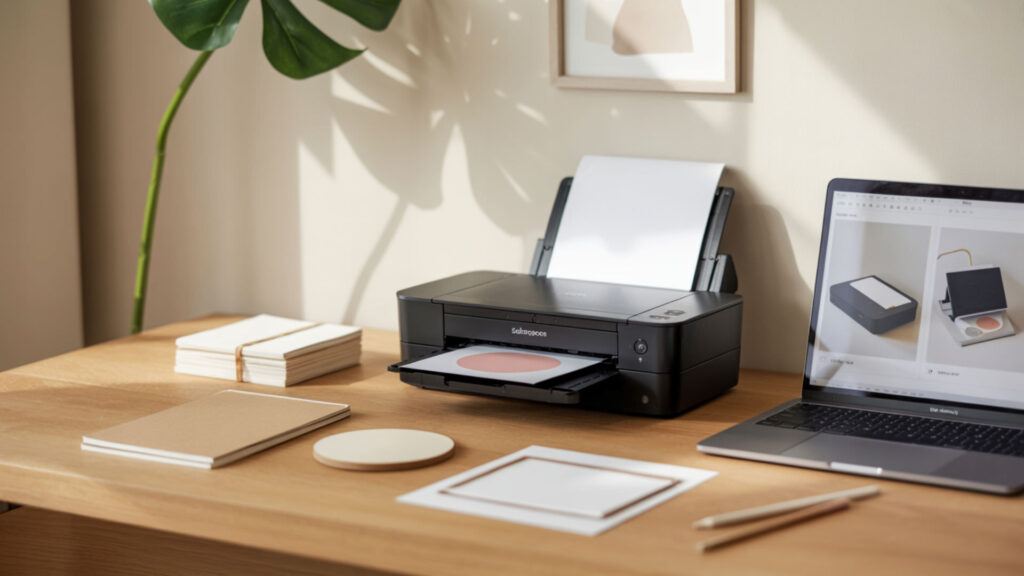
Use PNG format files for highest print resolution DPI output with sublimation. Configure driver and print settings for high quality output on matte or presentation paper types. Install ICC profiles for Brother combined with sublimation ink to ensure accurate color reproduction. Set print resolution to maximum DPI for detailed designs.
How to load paper into a Brother printer?
Pull out the paper tray, fan sublimation paper to prevent sticking, and place sheets with the printable white side facing down. Adjust paper guides to fit snugly against edges. Ensure driver and print settings match paper size to prevent jams with thicker sublimation media.
How to print thick paper on Brother printer?
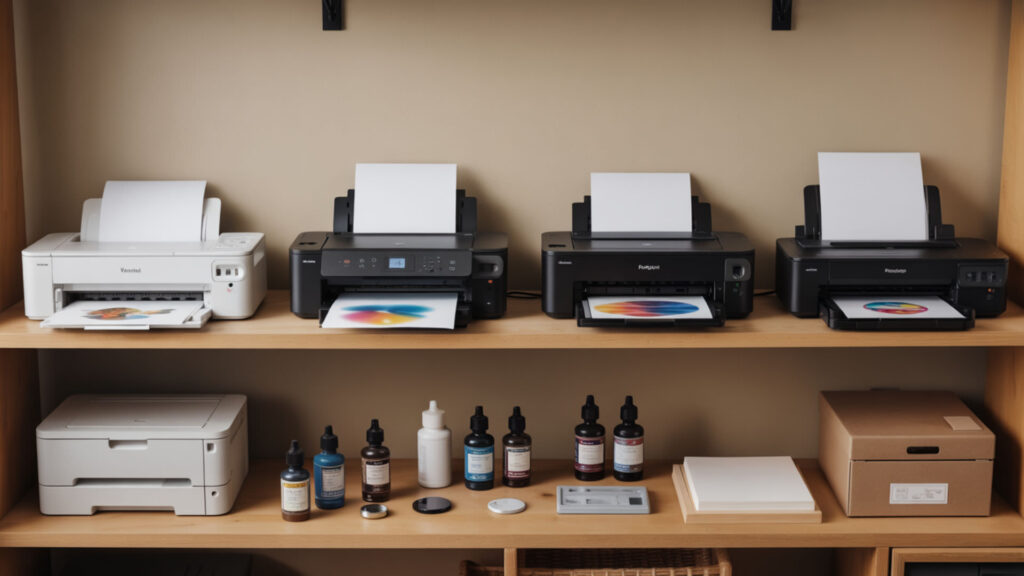
Use the manual feed slot or MP tray for thicker sublimation paper. Open the support flap completely and insert one sheet at a time. Configure driver and print settings for thick or cardstock media to ensure clean nozzle firing without smears or paper jams.
How do you know if your printer can do sublimation?
Check your printer specifications through model compatibility research to identify printhead technology. A piezo-style printhead indicates potential sublimation compatibility, while thermal inkjet head technology means conversion is unsafe. Epson EcoTank, WorkForce, and Sawgrass models commonly support sublimation. Most Brother, HP, and Canon printers use incompatible thermal printheads.
Can I use Epson ink in a Brother printer?
No, Epson sublimation ink CMYK cannot be used in Brother printers. Each manufacturer designs cartridges for specific printer models with different formulations. Mixing ink types causes high risk of cartridge contamination and blockage. Use only ink formulated for your specific printer brand and model.
What is the difference between a sublimation printer and a Cricut maker?
Dye-sublimation printing uses chemical dye diffusion to bond designs permanently into polyester fibers through heat press application. A Cricut maker cuts vinyl, paper, and fabric for craft projects but does not print images. Sublimation creates vibrant, washable designs while Cricut produces layered vinyl decals and cutouts.
Ready to Convert Your Brother Printer?
Before attempting conversion, confirm your Brother model uses piezo printhead technology through careful model research. Gather sublimation ink CMYK, refillable cartridges, and perform complete ink flushing before installation. Running cost evaluation often reveals that purchasing a dedicated sublimation printer or converting an Epson EcoTank provides better long-term value than Brother conversion attempts.
Frequently Asked Questions
How long should sublimation be pressed on cotton-blend shirts?
Press cotton-blend shirts for 45-60 seconds at 385-400°F with medium to firm heat press pressure. Pure cotton does not accept sublimation dye—only the polyester content receives the transfer. Higher polyester percentages produce more vibrant results.
Can converted inkjet printers print wirelessly?
Yes, converted printers retain wireless printing capabilities. Configure the printer through your network settings and ensure driver and print settings remain optimized for sublimation output. Wireless operation does not affect print quality or sublimation ink performance.
How do you use a manual feed slot for specialty papers?
Open the manual feed slot cover, adjust paper guides to match your sublimation transfer paper width, and insert one sheet at a time with the printable side facing up. Wait for the printer to pull the sheet before inserting another.
What basic setup is required before using a printer for sublimation?
Complete ink flushing to remove OEM ink, install sublimation ink and compatible cartridges, run nozzle checks until all channels fire correctly, and install ICC profiles for accurate color reproduction. Print resolution DPI settings should match your design requirements.
How do you save sublimation images as PDF files?
Export designs from your graphics software using File > Export or Save As, then select PDF format. Ensure color mode remains RGB for sublimation printing. PNG format often provides better print resolution DPI for sublimation transfers than PDF compression.
References
- Canon printhead FAQ’s, printer trouble shooting | Precision roller. (n.d.). PrecisionRoller.com: Online Shopping for Toner Cartridges & more. https://www.precisionroller.com/canon-printheads-faq.php?srsltid=AfmBOopWYqIl-vor-Ly78SLDgvp9bvG5KiZaL9Q0rUXmNKzwM-5FQEb3
- Thermal inkjet. (2024, September 12). Diagraph. https://www.diagraph.de/en/products/thermal-inkjet/

